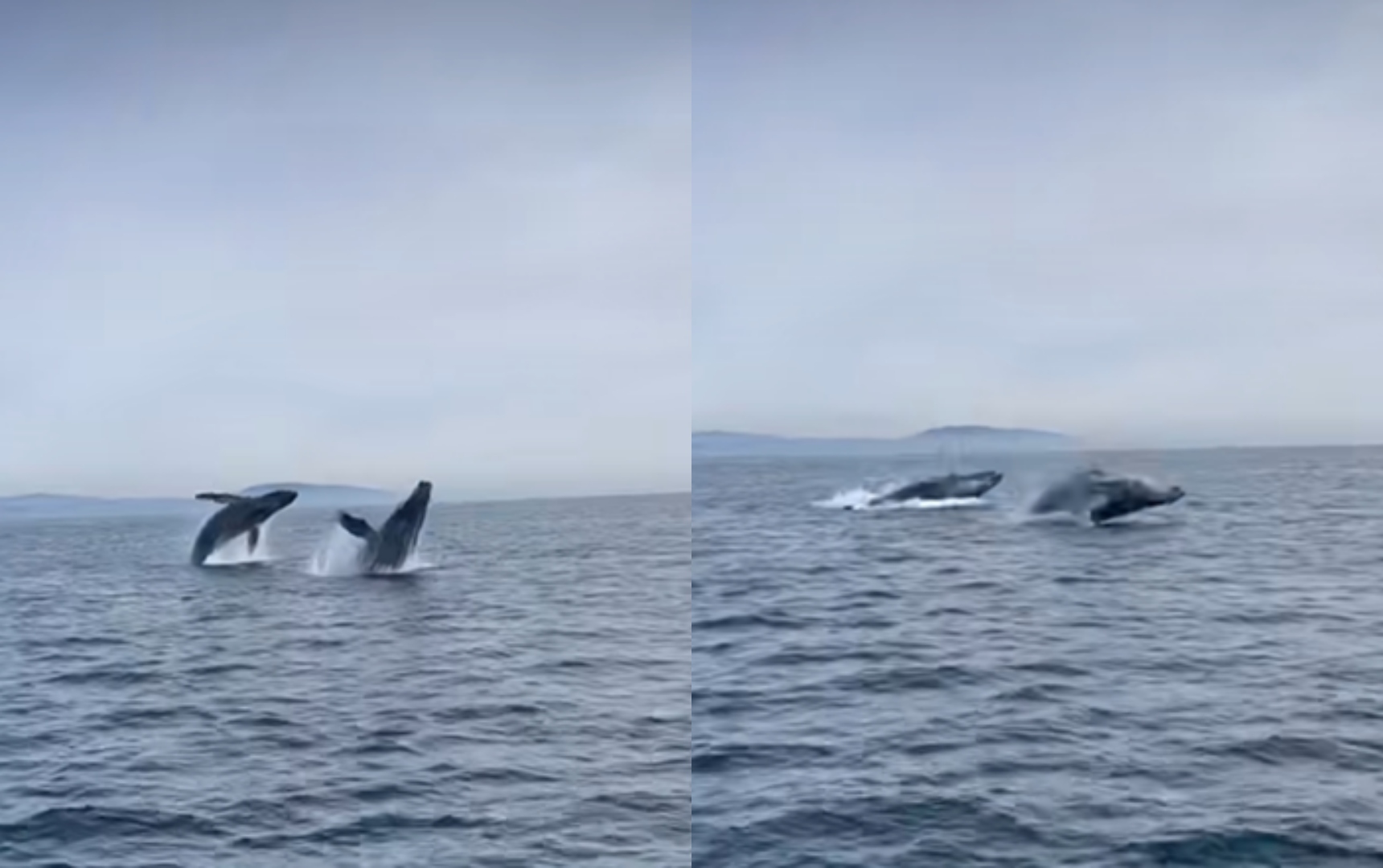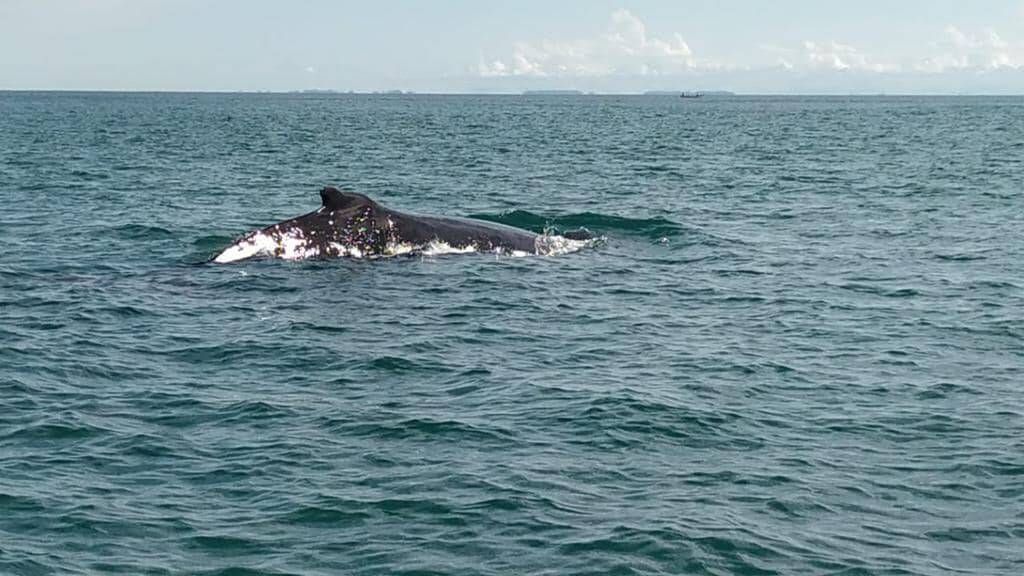Humpback whales blow bubble rings at humans in friendly encounters, scientists say.

For the first time, humpback whales have been documented producing large bubble rings, like a smoker blowing smoke rings, during friendly interactions with humans.
This behavior, little studied until now, could represent play or communication, according to an article by scientists from the SETI Institute and the University of California, Davis, published in the journal Marine Mammal Science.

Two humpback whales observed in California. Photo: Facebook: Dana Wharf Whale Watch
Humpback whales are already known for using bubbles to corral their prey and creating wakes and bubble bursts when competing to escort a female whale.
These new observations show that humpback whales produce bubble rings during friendly encounters with humans.
This discovery contributes to the WhaleSETI team's broader goal of studying non-human intelligence to aid in the search for extraterrestrial intelligence.
"Due to current technological limitations, a major assumption in the search for extraterrestrial intelligence is that extraterrestrial intelligence and life will be interested in making contact and will therefore target human recipients," said Dr. Laurance Doyle, a SETI Institute scientist and co-author of the paper, in a statement.
This important assumption is supported by the independent evolution of curious behavior in humpback whales.
Interact Humpback whales live in complex societies, exhibit acoustic diversity, use bubble tools, and help other species ward off predators, said Dr. Fred Sharpe, co-lead author and a UC Davis affiliate.
"Now, as a candidate signal, we're showing that they're blowing bubble rings in our direction in an apparent attempt to playfully interact, observe our response, or engage in some sort of communication," Sharpe said.
Humpback whales typically display curious and friendly behavior toward vessels and human swimmers, added co-lead author Jodi Frediani, a marine wildlife photographer and UC Davis affiliate.
"We've located a dozen whales from populations around the world, most of which have voluntarily approached boats and swimmers blowing bubble rings during these bouts of curious behavior," Frediani says.

Humpback whales in the Gulf of Urabá. Photo: Corpourabá
The study analyzes 12 episodes of bubble ring production involving 39 rings made by 11 individual whales.
Similar to the study of Antarctica or other terrestrial analogs as surrogates for Mars, the Whale-SETI team studies intelligent, non-terrestrial (waterborne), and non-human communication systems to develop filters that help analyze cosmic signals for signs of extraterrestrial life.
As Karen Pryor pointed out, "The bubble-making patterns of cetaceans constitute a mode of communication inaccessible to terrestrial mammals."
eltiempo





